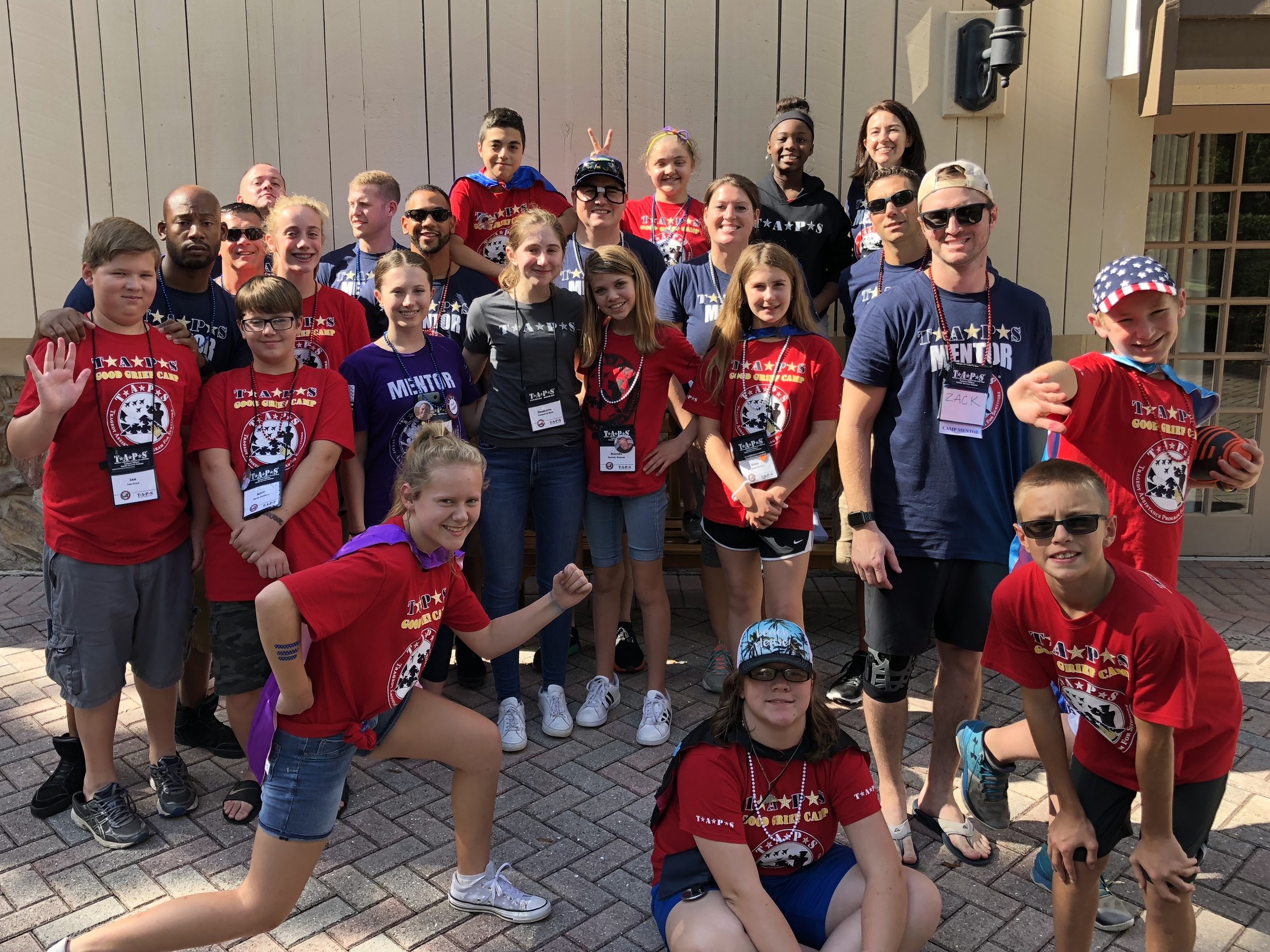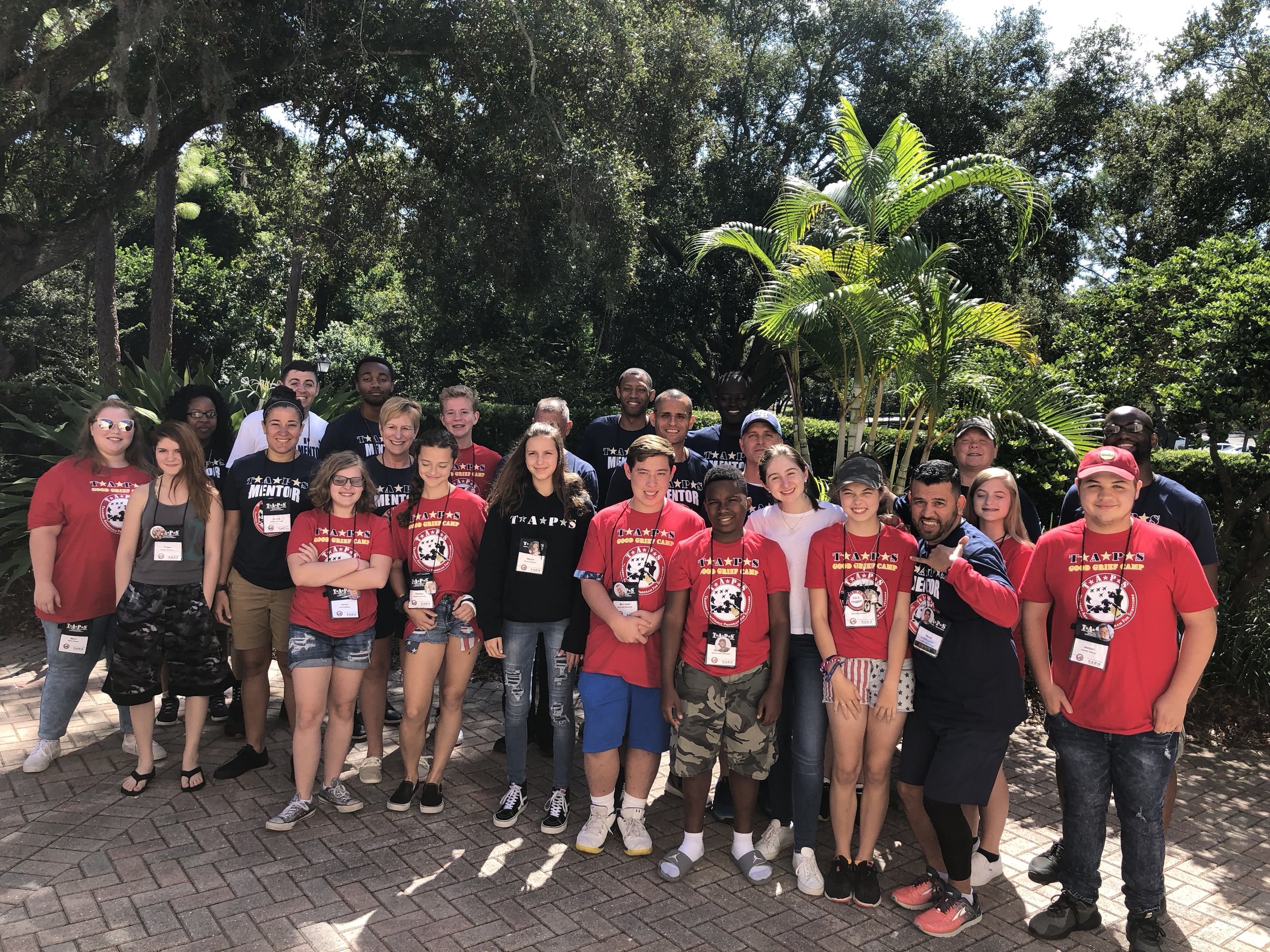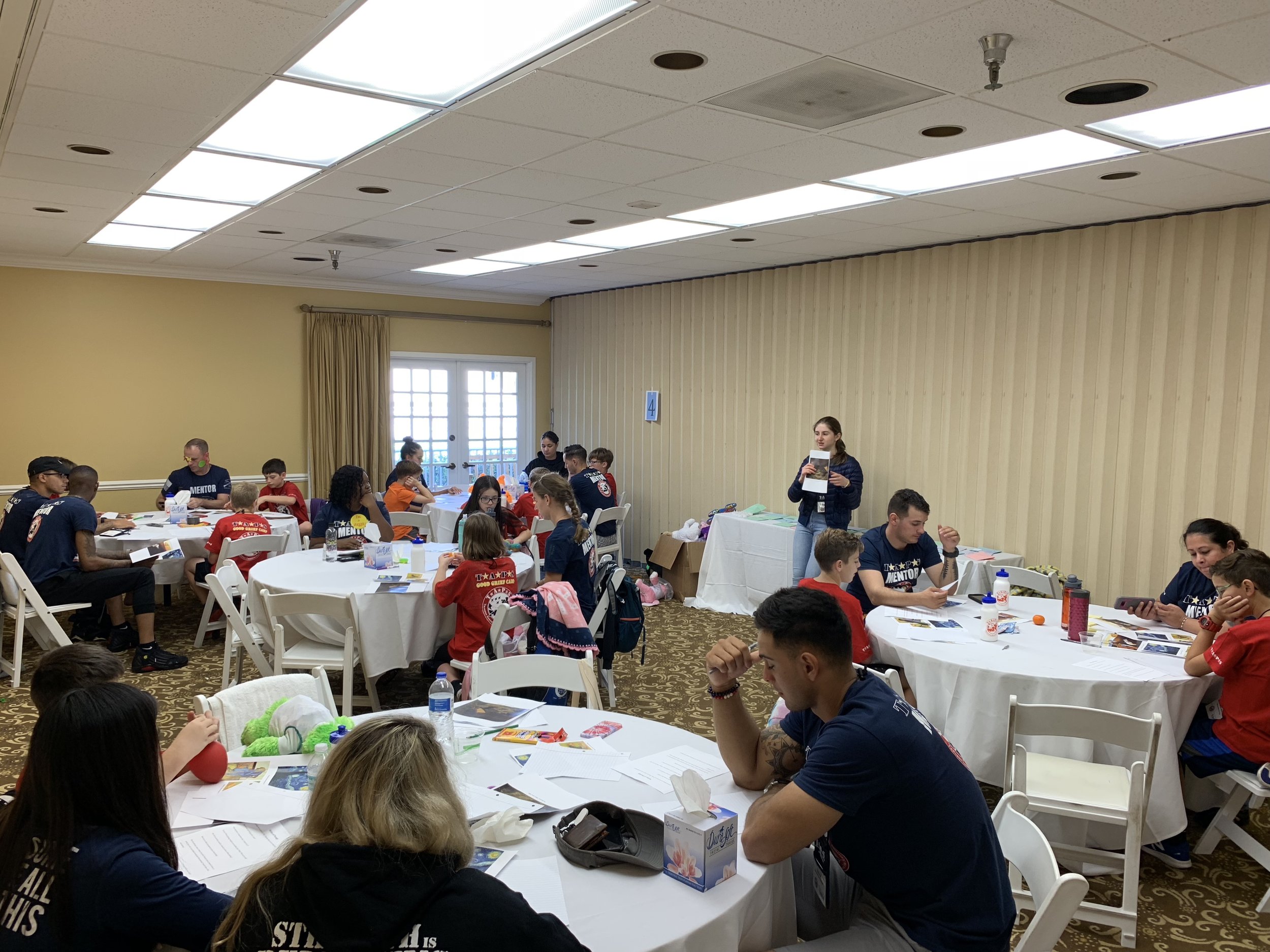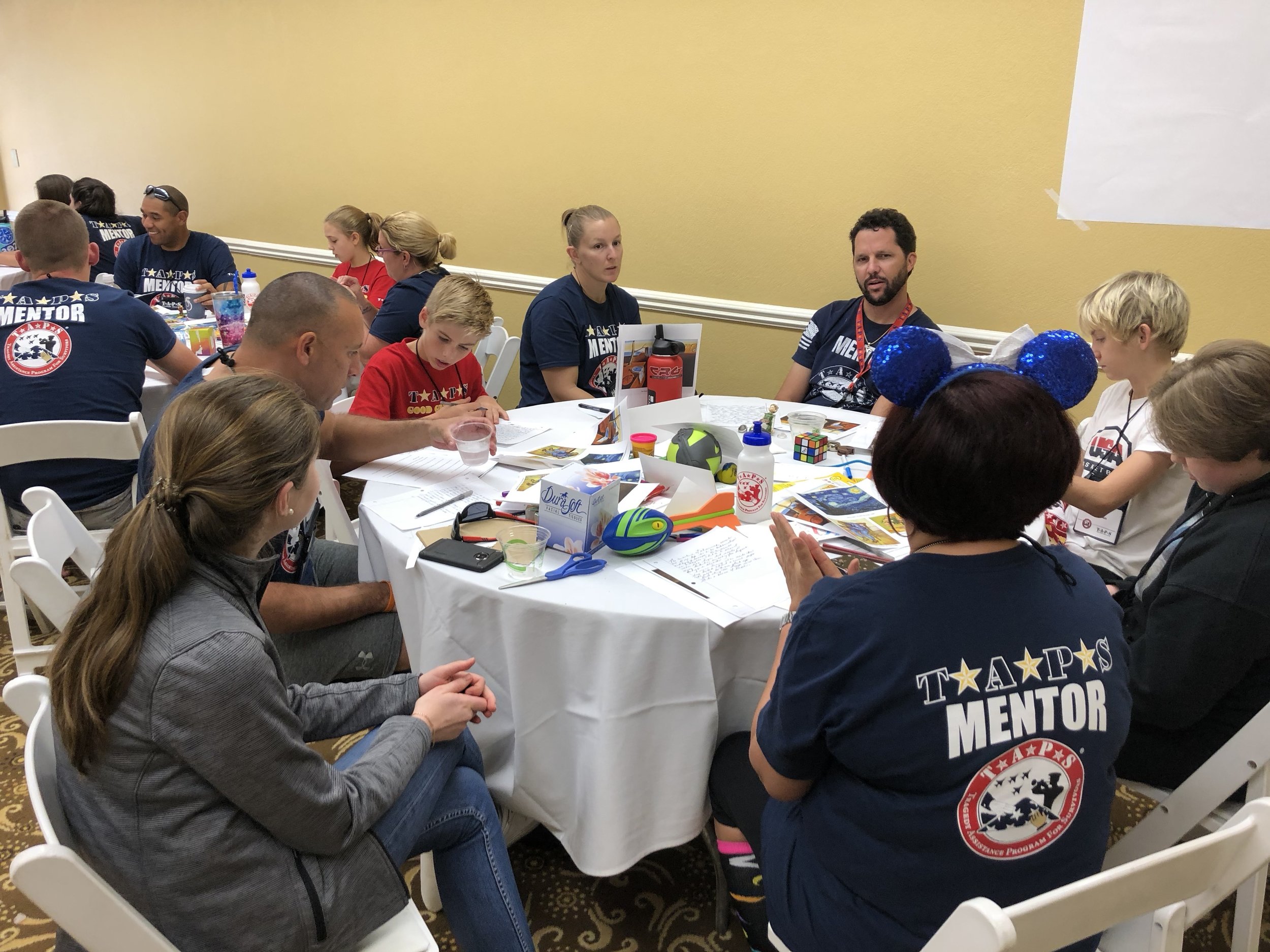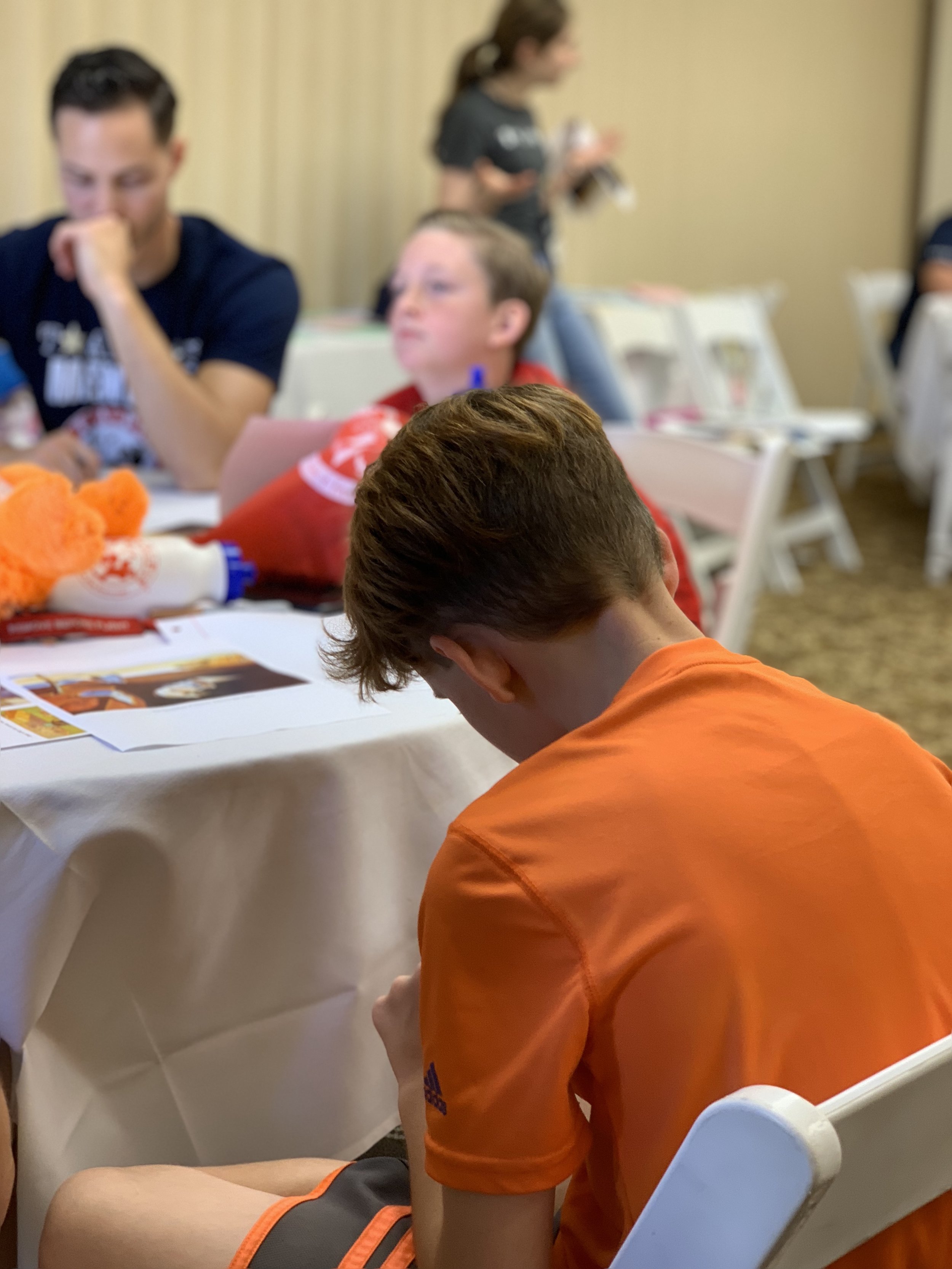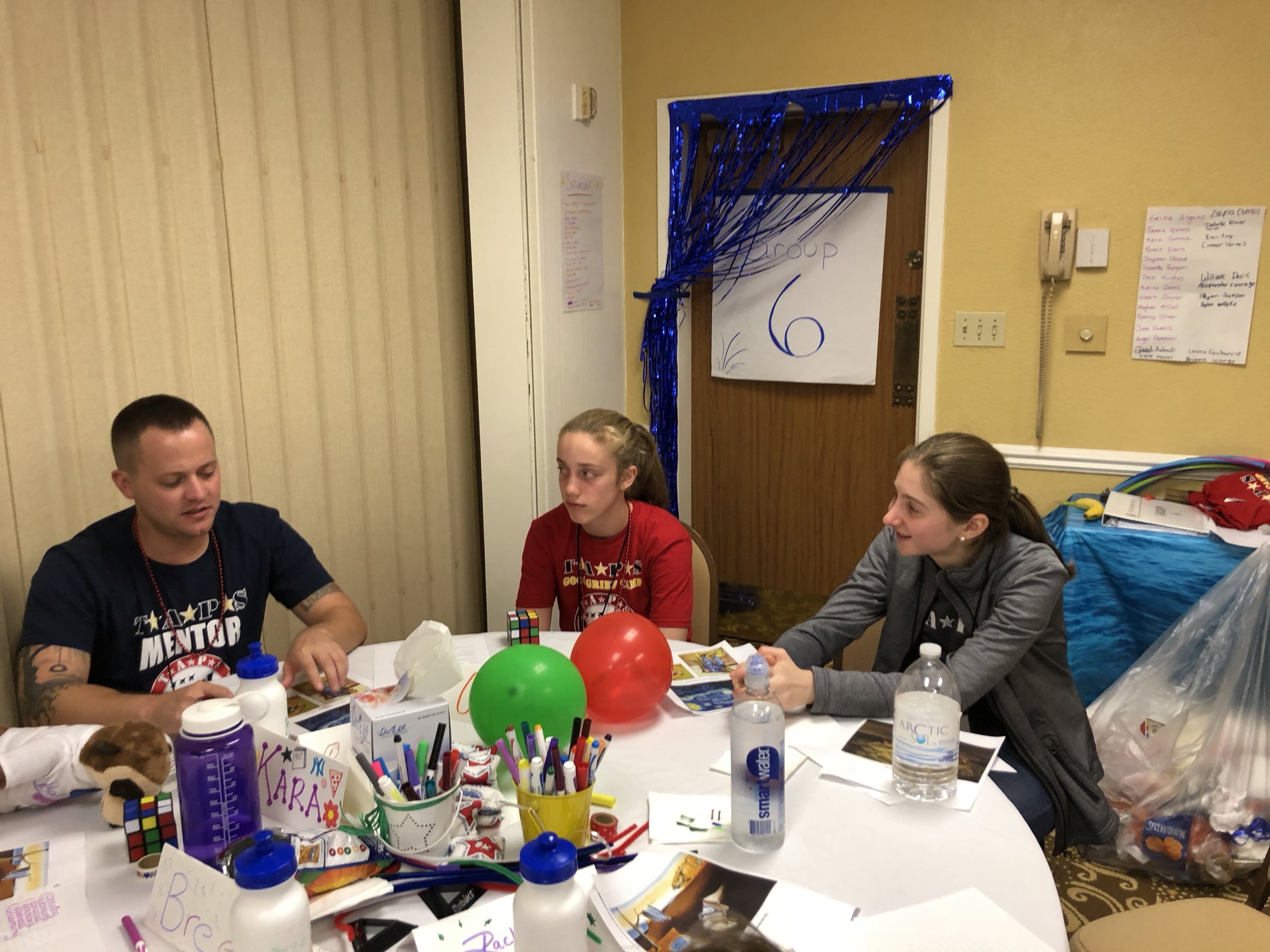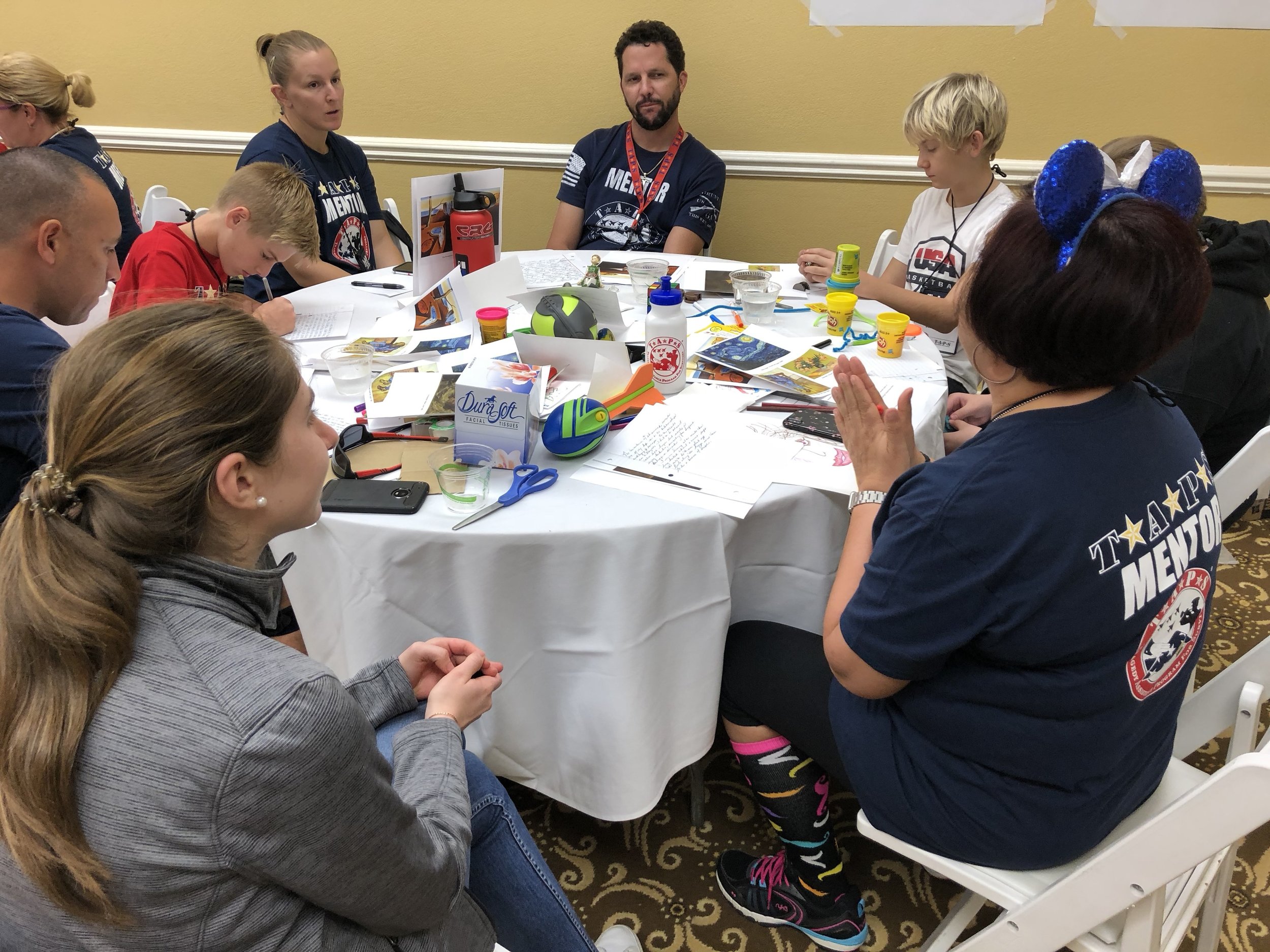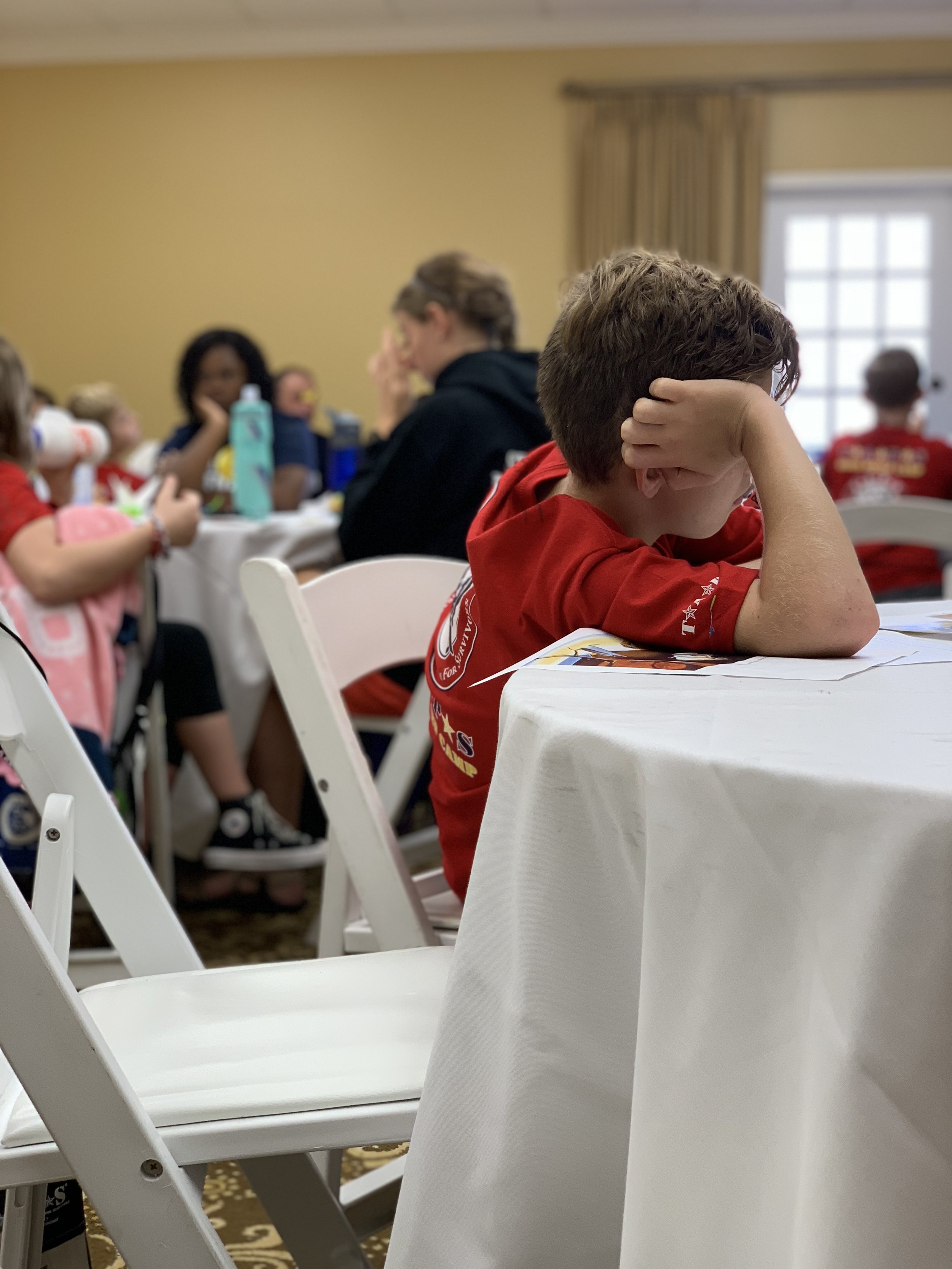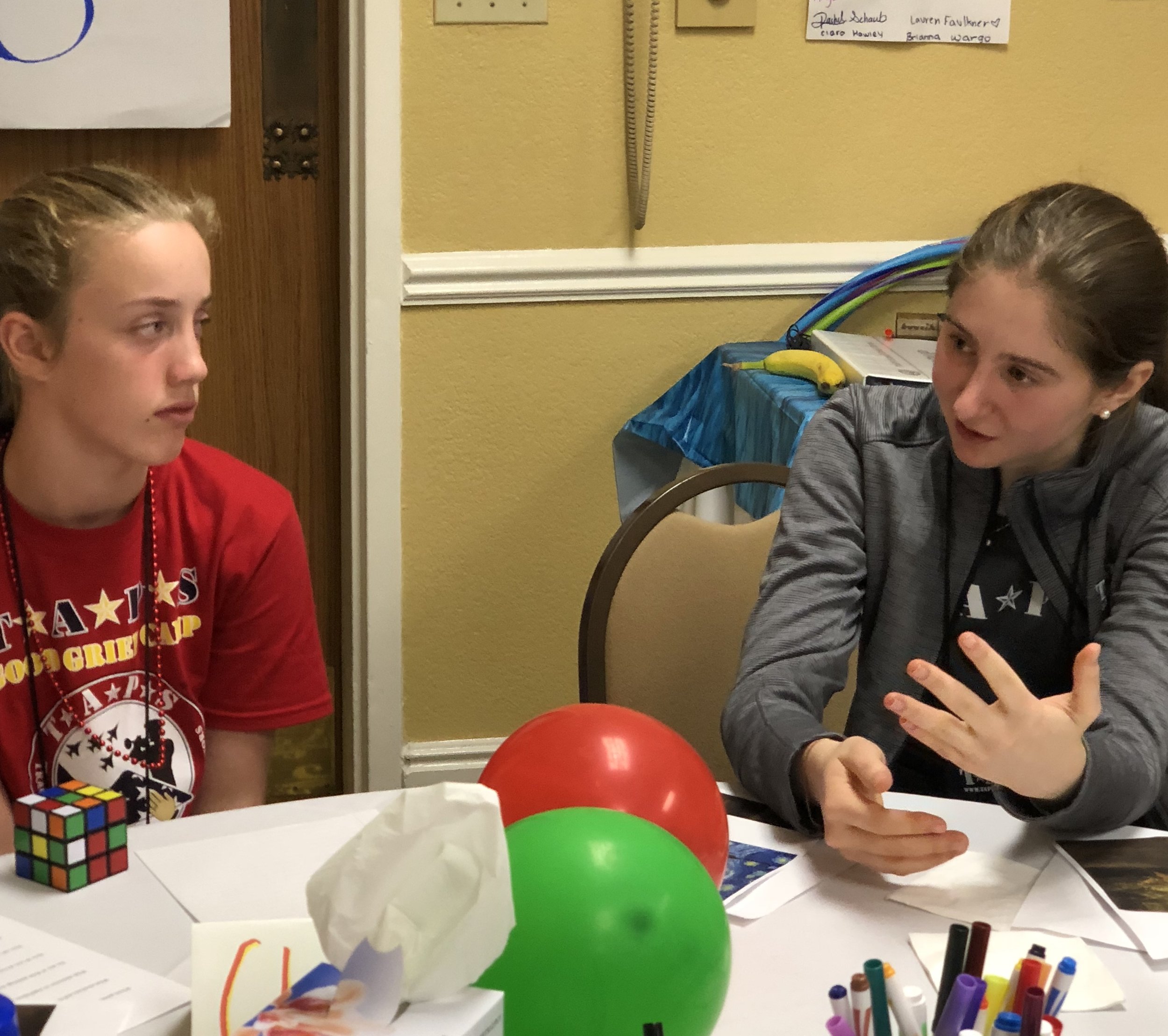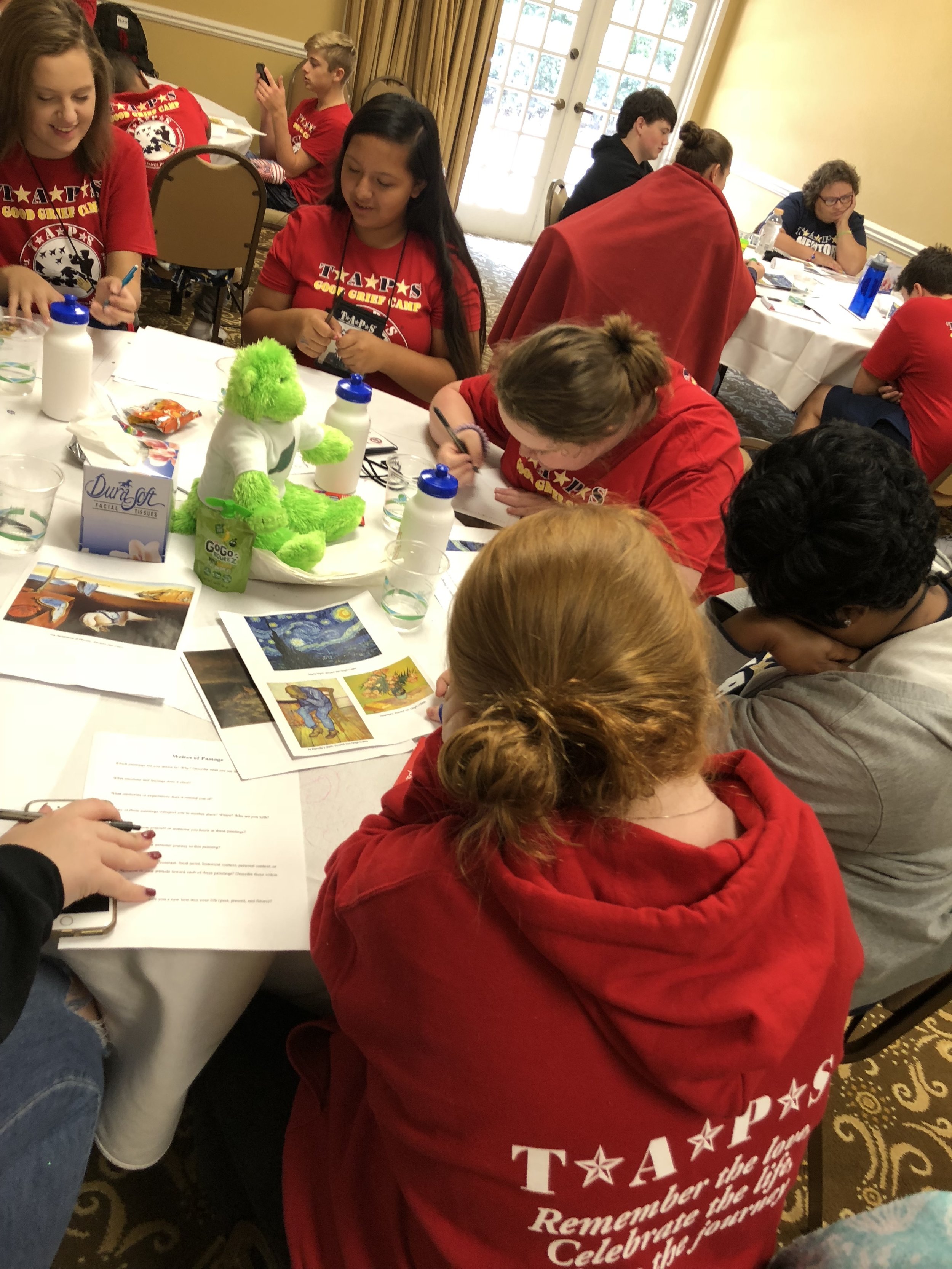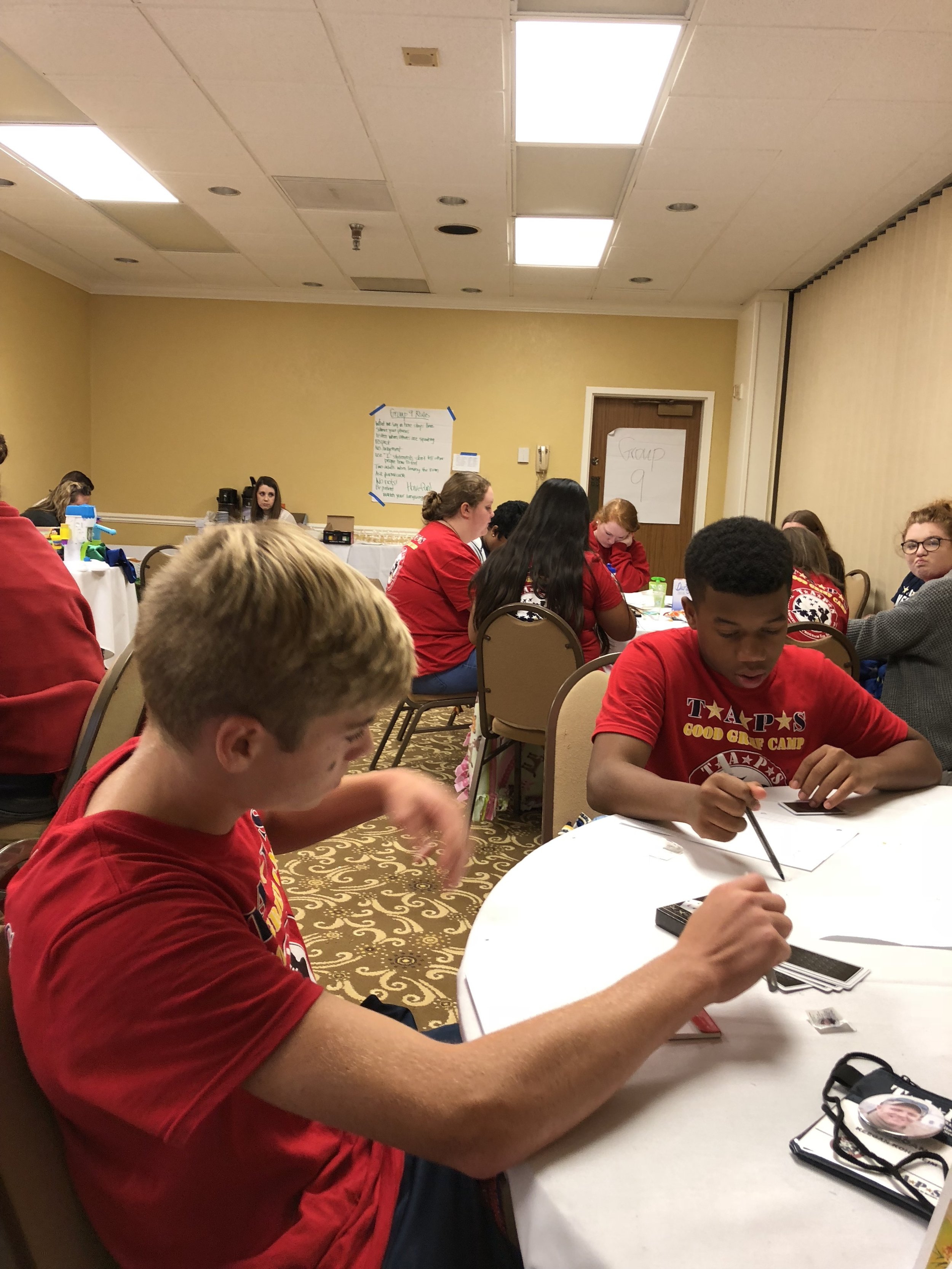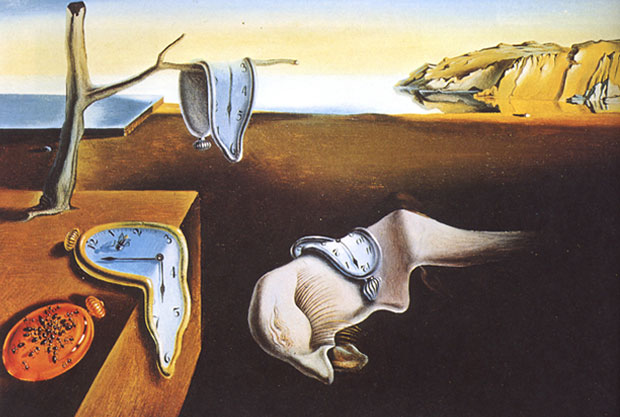Columbus Day Weekend Workshop at TAPS National Military Suicide Survivor Seminar and Good Grief Camp
October 6 – 8, 2018
In collaboration with Tragedy Assistance Program for Survivors
OVER THE 2018 COLUMBUS DAY WEEKEND, WRITES OF PASSAGE TRAVELED TO TAMPA, FLORIDA TO WORK WITH THE TRAGEDY ASSISTANCE PROGRAM FOR SURVIVORS DURING THEIR NATIONAL MILITARY SUICIDE SURVIVOR SEMINAR AND GOOD GRIEF CAMP. THE WORKSHOP WAS RUN WITH SIX GROUPS WITH OVER 240 PARTICIPANTS. THE WORKSHOP’S PARTICIPANTS INCLUDED THE CHILDREN OF OUR NATION’S FALLEN HEREOS WHO ARE TOUCHED BY SUICIDE AND THEIR MENTORS WHO ARE VETERANS OR CURRENTLY ENLISTED IN THE MILITARY. BELOW ARE THE CURATED PAINTINGS AND THEIR REFLECTIONS.
For the Columbus Day Weekend, we traveled to Tampa, Florida for an event in partnership with the Tragedy Assistance Program for Survivors (TAPS) at their National Military Suicide Survivor Seminar and Good Grief Camp. During this three-day event, I worked with over 240 participants. These included the children of our nation’s fallen heroes whose death is linked to suicide.
The initiative’s focus of pairing art with reflective writing proves to be both a therapeutic release and instrumental in navigating the uniquely complicated grief that follows a military and suicide loss. Thus, I curated five evocative paintings with ties to the themes of memory and emotional expression. As always, I started off each session by serving as a docent. The paintings we examined included William Turner’s The Shipwreck, Salvador Dalí’s The Persistence of Memory, and Vincent van Gogh’s The Starry Night, At Eternity’s Gate, and Oleanders. After much guided analysis and discussion, I encouraged the participants, while writing, to identify a specific personal experience and how that narrative fits within the larger story and emotion depicted in the painting. To make their written reflections more compelling, I explained how to use these artworks as a lens to complement and enrich their experiences–past, present, and future.
As always, the work produced was quite powerful as these young people daringly leaned into their most vulnerable, sensitive, and intimate thoughts. Many participants noted that not only was this their first encounter with the arts in a constructive setting, but also with the concept of introspective writing. For their courage and open-mindedness, I am thankful to have served them. As always, this event exemplified engagement in the fullest sense; while I provided the new approaches of both art and writing, their insights and bravery continue to impact me profoundly.
For example, we discussed the themes of sorrow and emotional expression in Vincent van Gogh’s The Starry Night. One of the many insightful comments shared during my sessions was made by a young man whose father recently committed suicide after a long battle with PTSD. Studying the painting, he wrote the following: “The swirling combination of dark shadows and glowing lights in the nighttime sky and town below are much like my mental condition in the wake of my father’s unexpected suicide: my mind, like van Gogh’s sky, is clouded by a whooshing mixture of serious thoughts of sadness and grief combined with the flashes of gleeful memories of my dad. In my darkest moments, positivity and hope are necessary as I work to honor his legacy. My emotional state, like this painting, is far from a perfectly blended image. Rather it is an image of two extremes that range to include tragically turbulent sorrow and my personal efforts at happiness and closure. I have a newfound comfort in looking at a piece of artistic expression that represents me so perfectly.”
The Shipwreck, William Turner
The Persistence of Memory, Salvador Dalí
The Starry Night, Vincent van Gogh
At Eternity’s Gate, Vincent van Gogh
Oleanders, Vincent van Gogh
